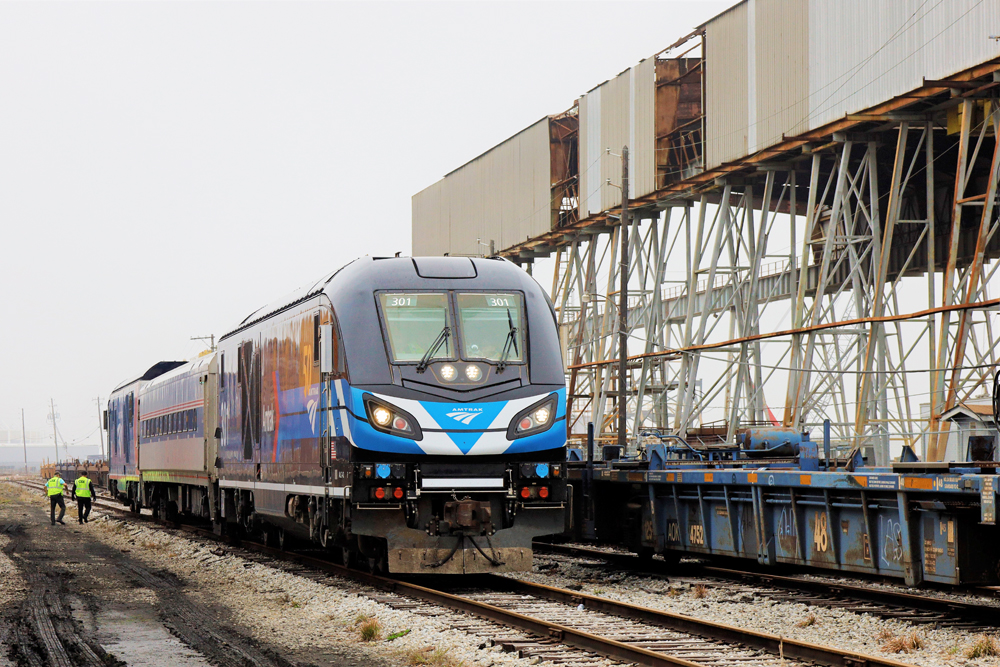WASHINGTON – Canadian Pacific and BNSF Railway say they have enough crews, power, and other resources to handle surging demand for rail traffic.
CP and BNSF are the first two Class I railroads to respond to the Surface Transportation Board’s request for updates about their ability to meet demand. Citing rail service problems, STB Chairman Martin J. Oberman on May 28 asked the big railroads to provide information on their hiring plans, as well as current crew and locomotive availability.
CP CEO Keith Creel says his railroad is running well. “CP’s service has been strong in 2021 and continues to improve,” Creel wrote, noting that 94% of scheduled trains operating in the U.S. arrived on time to date in the second quarter. Average train speeds are consistent with pre-pandemic averages, he wrote, and merchandise trip plan compliance sits at 96.4% for the second quarter in the U.S.
Some 1,030 of CP’s 1,400 road locomotives are in service, with 46 units standing by as a surge fleet. The railroad plans to hire 110 train and engine service employees this year, and has 42 train crew personnel furloughed out of 1,034 in the U.S.
“BNSF has and will continue to take the steps to ensure we have the right resources to meet new demand levels while providing consistent and reliable service,” CEO Katie Farmer wrote. “BNSF has demonstrated our ability to increase our resources with great speed in response to changing circumstances and I am confident in our ability to do so now.”
BNSF has sufficient crews for current volumes, Farmer says, noting that the railroad has more than 1,500 train, yard, and engine employees on furlough, down from just over 3,000 at the end of January. BNSF is hiring in many locations across the system, and has increased staffing at its intermodal terminals by 15% to 35% at various places on its network.
BNSF has 4,865 active high-horsepower locomotives and “considerable reserve capacity,” Farmer wrote. The railroad is using 41% more intermodal cars than a year ago, and 20% more than the active fleet in 2019, she wrote. It also boosted intermodal terminal crane capacity by 20%.
“All of this is not to suggest that the first five months of the year have been without challenges,” Farmer wrote, pointing to a pair of derailments on the railroad’s busy Southern Transcon and extreme winter weather earlier this year.
Railroads are part of a broader intermodal supply chain involving ports, trucks, and shipper and receiver facilities, Farmer notes. BNSF’s intermodal terminals have been affected by historically high container dwell and chassis shortages as shippers and receivers take as much as 48 hours longer than usual to load and unload equipment.
Farmer also noted that BNSF operates 24/7, while some terminals do not. “Some of our westbound flow is restricted into various terminals due to their processing capabilities,” she wrote. “We need all parts of the supply chain to be willing to operate 24 hours a day, seven days a week to help keep up with these unprecedented demand levels.”
Among the terminals that don’t operate around the clock: The ports of Los Angeles and Long Beach, which have experienced a logjam of container ships waiting offshore amid record volumes.
Trade associations representing chemical and fertilizer shippers have written to the STB in the past two weeks to complain about rail service. Neither CP nor BNSF were mentioned in those letters. Fertilizer shippers singled out problems on CSX Transportation, while chemical shippers said they are experiencing service problems on CSX, Kansas City Southern, and Norfolk Southern.














They are saying this to draw a contrast between themselves and the other PSR-inflicted roads struggling to meet current, let alone increased demand. Good show!
PSR-afflicted. There, fixed it for ya’. But yes, they have inflicted it upon themselves.
The other railroads are afflicted with a previously unknown disease, “PSR”, which means Hating Your Own Customers And Telling Them You Don’t Want Their Business”.
Memphis…Ahem…….